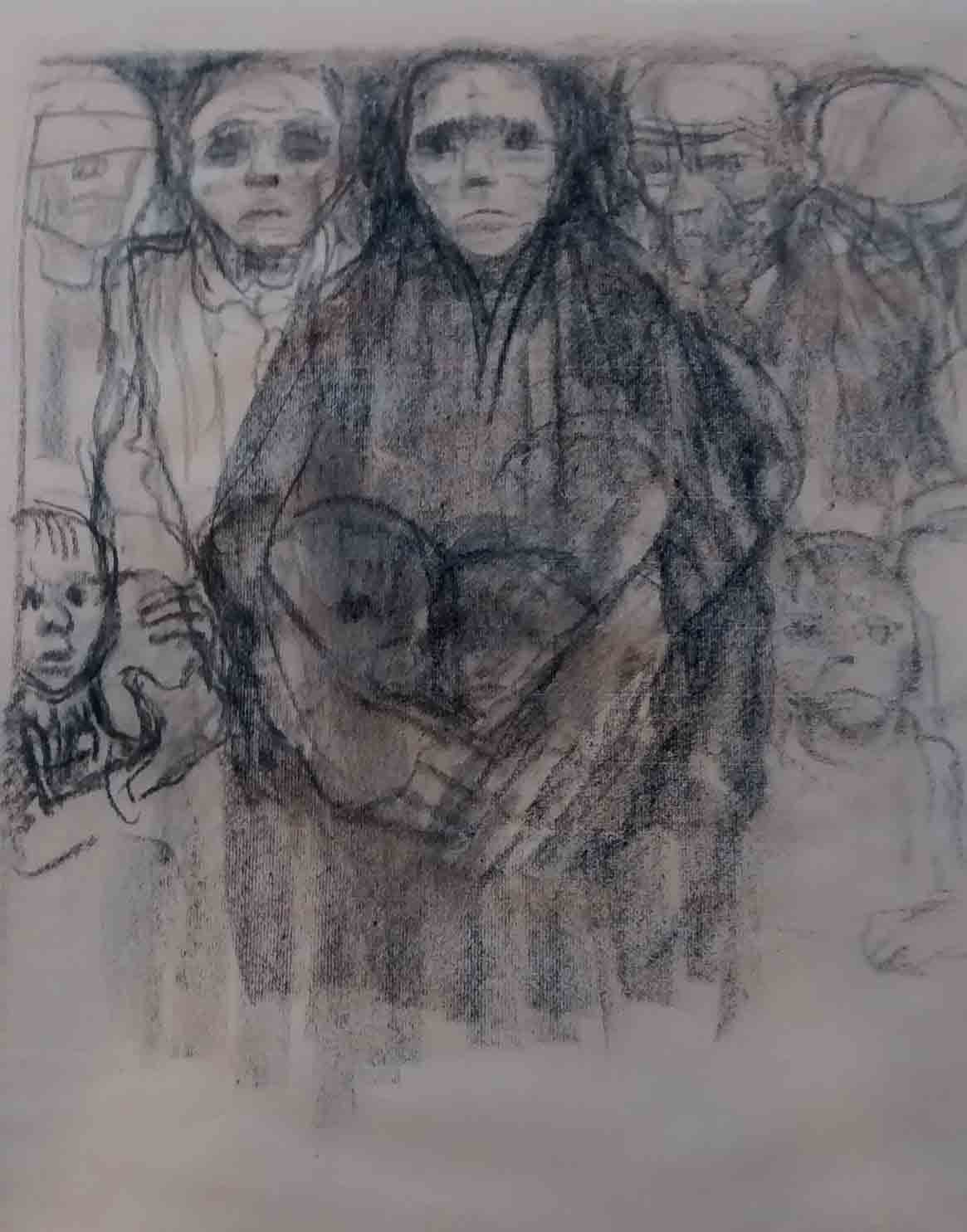Our Lady of Protest
Artist: Kollwitz, Käthe (German, 1867-1945)
Title: The Survivors (Die Überlebenden)
1922/1923
Charcoal on laid paper
1947.12.71
National Gallery of Art, Washington, DC.
Student Curator Comments:
In this work there is now one central mother figure. Her grief and anxiety can be seen in her furrowed brow and frown. She protects her children and stands up for the lower-class German society that was especially harshly affected by war. Here, Kollwitz borrows from the image of the Virgin Mary. In doing so, she ascribes new meaning to her image. Instead of the saints who adore Mary in a traditional representation of maestà (majesty), the figures surrounding the mother represent the suffering caused by war and famine. There is a blinded soldier and a emaciated young man to her left, a grim elderly man and a weeping woman to her right, and a cast of starving children around her. To her immediate right, a boy looks up at her anxiously and pulls at her arm, as if asking for comfort. This central grouping recalls the Madonna della misericordia (Virgin of Mercy), a traditional motif in which Mary is a monumental figure who protects supplicants who gather near her and shelter under her cloak. Kollwitz’s sheltering mother wears a black shawl, suggesting she is a war widow; and she holds three children tightly with her enormous arms and hands, as if to protect them from harm. Like traditional Marian imagery, which expresses grief to encourage a contemplation of Christ’s suffering, The Survivors evokes affliction to encourage a contemplation of the suffering of the artist’s own day.
This drawing was used to protest against war. It was adapted by Kollwitz into a poster commissioned by the International Federation of Trade Unions for “Anti-War Day” on September 21, 1924.





